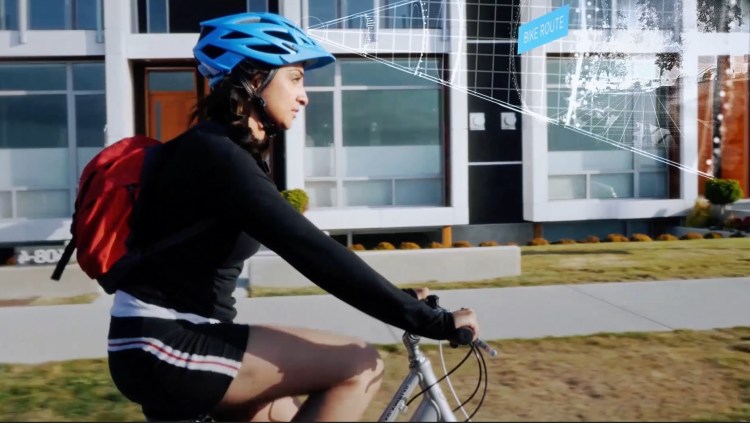Movidius‘ vision is to build the visual sensors for the Internet of Things, making everyday things smart and connected. And that vision helped the company raise $40 million in funding today.
The investment is one of the biggest in a chip design company in the past couple of years, and it shows there’s still room for startups in a $300 billion industry dominated by giant companies. The Internet of Things requires innovation, and it’s creating that opening for startups.
San Mateo, California-based Movidius designs chips that can be used to sense the environment around you. They can be used for applications like self-driving cars or bicycle helmets that can detect road hazards.
The investment was led by Summit Bridge Capital (a joint venture between Atlantic Bridge Capital and WestSummit Capital) and new investors Arch Venture Partners and Sunny Optical Technology Group. Early investors also participated, including Atlantic Bridge Capital, AIB Seed Capital Fund, Capital-E, DFJ Esprit, and Robert Bosch Venture Capital. David Lam of WestSummit Capital will be joining Movidius’ board of directors.
In the past two years, the company has launched the next generation of its vision processor for mobile and connected devices. Movidius is also collaborating with Google on its Project Tango device, a smartphone that can sense its environment.
Movidius will use the additional financing to try to innovate further in software and hardware for visual sensing. It is targeting emerging applications such as virtual reality headsets, drones, home automation, and wearables. Vision is half the challenge in making these devices smarter.
“I think the market for visual sensing and the Internet of Things is going to be a game changer,” said Remi El-Ouazzane, CEO of Movidius, in an interview with VentureBeat. “This funding is an indication of our momentum.”
The goal for the Internet of Things is to connect billions of devices to the Internet in a quest to make them smarter and more useful. Movidius will have to make its Myriad family of chips so that they are low power, small, and cheap.
Movidius has offices in Silicon Valley, Romania, and Ireland. It has 70 employees, including 65 engineers. The company was founded in 2006, and it has raised $88 million to date. Rivals include Qualcomm, Intel, and Nvidia. But none are as focused on the Internet of Things visual processor market as Movidius. Rival chip designer Ambarella makes high-end video compression and image processing chips, but at a higher power consumption level.
Nvidia seems like it would be a natural for this market, as it aims to own visual computing. But El-Ouazzane said that this market requires a new architecture that is focused on the Internet of Things market from the ground up.
“Hardware only gets yo so far,” El-Ouazzane said. “We have nailed down what a visual processing unit needs to look like for embedded devices. But that is only 10 percent of the equation. You have to do the software architecture and algorithms that make it work.”
Movidius has a lot going for it, as we noted in an earlier story. Its chairman is Dan Dobberpuhl, who cofounded and sold chip design firm PA Semi to Apple for $278 million in 2008. PA Semi’s technology became the foundation of Apple’s A series chips, which liberated the company from being dependent on the likes of Intel or Samsung for chip designs. Earlier, Movidius focused on visual technology for smartphones. It is still using the same technology, but the momentum in the Internet of Things is big, El-Ouazzane said.
“Over the past few years Movidius has built a world-class team and delivered a technology and product that is truly unique, with capabilities that will have a major impact on the future of vision processing across a wide range of industries. We are delighted to lead this financing alongside an exceptional group of global investors,” said WestSummit Capital’s Lam in a statement.
Movidius got started after Dublin, Ireland-based cofounders Sean Mitchell and David Moloney saw the opportunity to enable the devices surrounding us to continuously augment our daily lives. They thought they could innovate by creating visual sensing chips that didn’t use a lot of power.
The two men had worked together since 1994. The “lightbulb” moment came when Moloney, who was working on a doctorate in high-performance computing at Trinity College in Dublin, talked to academic colleagues about what Havok was doing in game physics and came to the conclusion that his work could be applied to Havok’s problem-space but targeting mobile devices. He and Mitchell spoke to Havok chief technology officer Steve Collins about their idea, and the company was born.
The company said it has customers coming out with applications that use its chips by the end of 2015.
VentureBeat's mission is to be a digital town square for technical decision-makers to gain knowledge about transformative enterprise technology and transact. Learn More



